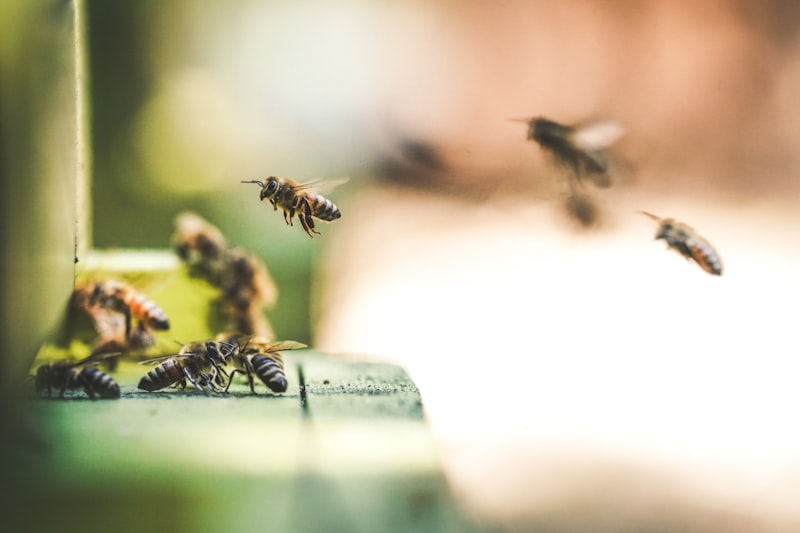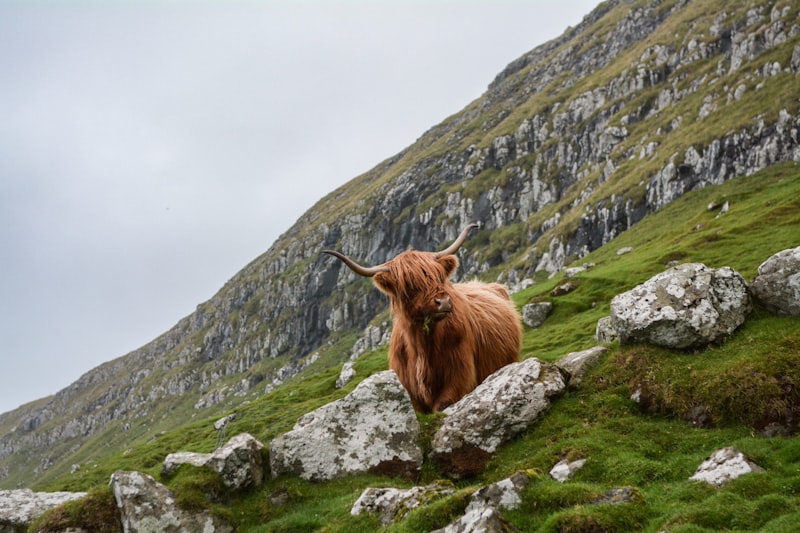Ever wondered about the creatures that defy our expectations of what an animal can be? From deep in the oceans to the highest peaks, our planet is home to some truly peculiar animals. These fascinating creatures not only survive but thrive in environments that seem almost alien to us.

Take the Axolotl, for example. Often referred to as the “Mexican walking fish,” this amphibian has the remarkable ability to regenerate lost body parts, making it a subject of scientific fascination. Found exclusively in the lakes of Mexico, its external gills and perpetual smile make it a charming oddity in the animal kingdom.
Venture into the depths of the ocean, and you might encounter the Dumbo Octopus. Named after the famous Disney character for its ear-like fins, this deep-sea dweller gracefully navigates the cold, dark waters thousands of feet below the surface. Its unusual appearance and delicate movements make it a mesmerizing sight for marine biologists and enthusiasts alike.
On land, the Aye-Aye of Madagascar stands out with its long, bony finger used for tapping on trees to find grubs. Often misunderstood due to its eerie appearance and nocturnal habits, this primate is crucial to its ecosystem’s balance, playing a role in seed dispersal and insect control.
Nature’s diversity extends to the skies as well. The Hoatzin, found in the Amazon rainforest, looks like a creature straight out of prehistory with its blue face and spiky crest. Its diet of leaves and unique digestive system produce a smell akin to fresh manure, earning it the nickname “stinkbird.”
These peculiar animals remind us of nature’s boundless creativity and adaptability. Each one has evolved unique traits that allow it to thrive in its niche, showcasing the endless wonders our planet holds beyond what meets the eye.
Nature’s Oddities: Unveiling the Fascinating World of the Most Peculiar Animals
Welcome to the extraordinary world of nature’s oddities, where the animal kingdom reveals its most peculiar members. From the depths of the ocean to the highest mountains, these creatures captivate our imagination with their unique adaptations and bizarre appearances. Let’s take a dive into this fascinating realm and uncover some of nature’s most peculiar animals.
Ever heard of the Aye-aye? This nocturnal lemur from Madagascar looks like a mix between a bat and a rodent, with its large eyes and elongated middle finger used for tapping on trees to find grubs. It’s as if nature decided to blend features from different species into one curious creature.
Moving from the treetops to the sea, the Blobfish is another marvel. Resembling a gelatinous mass with a drooping face, this deep-sea dweller is perfectly adapted to its environment where pressures are extreme and food is scarce. Its peculiar appearance is a testament to the diversity of life even in the harshest conditions.
On land, the Star-nosed mole stands out with its star-shaped nose that looks like something out of a science fiction movie. This unique adaptation helps it navigate its underground tunnels with remarkable speed and accuracy, showcasing nature’s ingenuity in creating solutions for survival.
But perhaps the most iconic of nature’s oddities is the Platypus. Found in Australia, this egg-laying mammal baffled scientists when it was first discovered due to its combination of mammalian, avian, and reptilian traits. With its duck-like bill, beaver-like tail, and otter-like feet, the Platypus remains a symbol of nature’s endless creativity.
Nature’s oddities remind us that there is still so much to discover and learn from the natural world. Each of these creatures has adapted uniquely to its environment, demonstrating the incredible diversity of life on Earth. As we continue to explore and protect our planet, let’s marvel at these peculiar animals and the wonders of evolution that shaped them.
Beyond Ordinary: Discovering the Quirkiest Creatures That Defy Expectations
In the vast tapestry of nature, some creatures stand out not just for their beauty or strength but for their sheer quirkiness. These animals defy the ordinary and captivate our imagination with their unique traits and behaviors. Imagine a frog that glides through the air with webbed feet, not in water but among treetops—the Wallace’s flying frog does just that, using its parachute-like skin to gracefully navigate from tree to tree in Southeast Asia’s rainforests.
Then there’s the axolotl, a Mexican salamander that retains its larval features throughout its life, giving it an eternal youthful appearance. This curious creature can also regenerate lost limbs, making it a symbol of resilience in the animal kingdom.
Delving deeper into the ocean, we encounter the sarcastic fringehead, a fish known for its territorial behavior and bizarre-looking mouth. When two fringeheads meet, they engage in a ritualistic “mouth fight,” where they open their huge mouths wide at each other in a display of dominance.
Moving to the African savannah, the aardvark catches attention not just for its odd appearance—resembling a mixture of several animals—but also for its peculiar diet of ants and termites. With its long snout and large ears, the aardvark spends its nights digging for insect meals, contributing to the ecosystem in unexpected ways.
These creatures remind us of nature’s boundless creativity and the surprises it holds. Each one has adapted uniquely to its environment, carving out a niche that challenges our perceptions of what is normal. From flying frogs to mouth-wrestling fish, the animal kingdom continues to amaze with its diversity and ingenuity.
Curious Critters: Exploring the Weird and Wonderful Side of Wildlife
Have you ever wondered about the bizarre creatures that roam our planet? From the depths of the ocean to the densest jungles, wildlife presents a fascinating array of oddities that capture both imagination and scientific intrigue.
Consider the axolotl, often referred to as the “Mexican walking fish,” a creature that never undergoes metamorphosis from larval to adult stages. It retains its juvenile features throughout its life, including external gills that give it a peculiar appearance unlike any other amphibian.
Venture into the rainforests of Madagascar, and you might encounter the aye-aye, a primate that defies typical primate norms with its elongated middle finger used for extracting insects from tree bark. This nocturnal creature’s unique feeding habits and appearance have earned it a place in local folklore as a harbinger of misfortune.
Moving to the ocean depths, the vampire squid lurks with its eerie appearance and peculiar habits. Despite its name, it’s more of a gentle drift-seeker, using bioluminescence and webbed arms to survive in the dark abyss, captivating researchers with its mysterious lifestyle.
Closer to home, the tardigrade, often called the “water bear,” demonstrates astonishing resilience. These microscopic creatures can survive extreme conditions that would be fatal to most other life forms, including intense radiation and the vacuum of space, sparking curiosity about their potential applications in scientific research.
From Axolotls to Aye-Ayes: Meet Earth’s Strangest and Most Endearing Animals
Have you ever wondered about the marvels of nature that defy expectations and captivate our hearts? Look no further than the extraordinary creatures that roam our planet, each with its unique charm and astonishing adaptations. From the enchanting Axolotl to the curious Aye-Aye, these animals not only intrigue but also teach us about the diversity of life on Earth.
Let’s start with the Axolotl, often called the “Mexican walking fish,” though it’s not a fish at all but rather a remarkable amphibian. Found exclusively in the ancient lakes of Mexico, Axolotls possess the incredible ability to regenerate limbs—a feat that remains a fascination for scientists studying regeneration in vertebrates.
Moving on to Madagascar, where the mysterious Aye-Aye resides. With its large, piercing eyes and slender fingers, the Aye-Aye resembles a creature straight out of a fantasy tale. This nocturnal primate uses its elongated middle finger to tap on trees, listening for the hollow sound that indicates a tasty insect meal inside—a technique known as percussive foraging.
Imagine encountering the Pink Fairy Armadillo, the smallest and arguably cutest armadillo species known for its rosy shell and delicate features. This tiny mammal, native to Argentina, is an expert burrower, disappearing quickly into the sandy soils of its arid habitat at the slightest disturbance.
On the other side of the globe, in Australia, lives the Platypus—an animal so bizarre in appearance that early European naturalists believed it to be a hoax. With its duck-like bill and webbed feet, the Platypus is one of the few mammals that lay eggs rather than giving birth, adding to its mystique.
Nature’s inventiveness knows no bounds, as evidenced by the deep-sea Dumbo Octopus, named after the Disney character for its ear-like fins. This cephalopod gracefully navigates the depths of the ocean, its unique shape enabling it to hover and glide with ease, a sight both mesmerizing and surreal.
From the Axolotl’s regenerative powers to the Aye-Aye’s unusual hunting technique, each of these animals offers a glimpse into the wonders of evolution and adaptation. Their stories remind us of the endless surprises awaiting discovery in the natural world, where strangeness often hides beauty and charm beneath its surface.
Nature’s Oddballs: 10 Creatures That Redefine Quirkiness in the Animal Kingdom
Have you ever wondered about the weird and wonderful creatures that roam our planet? From the depths of the ocean to the highest mountains, nature has crafted some truly bizarre beings. These creatures not only defy expectations but redefine quirkiness in the animal kingdom. Let’s dive into the world of these fascinating oddballs.
-
Axolotl – Meet the axolotl, often called the “Mexican walking fish,” although it’s not a fish at all! This unique amphibian retains its larval features throughout its life, including its cute external gills. Found exclusively in the waters of Mexico, the axolotl has remarkable regenerative abilities, capable of regrowing limbs with ease.
-
Proboscis Monkey – Found in Borneo, the proboscis monkey is easily recognized by its large, pendulous nose that hangs over its mouth. This comical feature serves a purpose beyond just looks—it helps amplify mating calls and acts as a resonating chamber. Imagine having a built-in megaphone on your face!
-
Blobfish – Known for its gelatinous appearance, the blobfish inhabits the deep waters off the coasts of Australia and New Zealand. While it looks like a deflated balloon at the surface, its unique body structure allows it to survive the immense pressure of the deep sea.
-
Aye-Aye – Found in Madagascar, the aye-aye is a truly peculiar primate with oversized ears, large eyes, and elongated middle finger. This finger is used to tap on trees and extract insects—a bit like nature’s own built-in woodpecker!
-
Narwhal – Often referred to as the “unicorn of the sea,” the narwhal is a type of whale with a long spiral tusk protruding from its head. This tusk, actually an elongated tooth, can reach lengths of up to 10 feet and is used for various functions including sensing changes in the environment.
-
Sunda Colugo – Also known as the “flying lemur” (even though it doesn’t fly and isn’t a lemur), this creature glides effortlessly through the forests of Southeast Asia using a membrane that stretches from its neck to its fingertips. It’s like having a built-in hang glider!
-
Mantis Shrimp – Don’t be fooled by its size; the mantis shrimp is a tiny powerhouse in the ocean. With eyes that can see polarized light and limbs that strike with the force of a .22 caliber bullet, this colorful crustacean is a true marvel of nature’s engineering.
-
Pink Fairy Armadillo – Resembling a fluffy pink ball with armor, this miniature armadillo is found in central Argentina. It spends most of its life underground and uses its powerful claws to dig burrows, emerging only at night to feed on insects and plants.
-
Okapi – Native to the dense rainforests of the Democratic Republic of Congo, the okapi resembles a cross between a zebra and a giraffe. Despite its appearance, it is actually most closely related to the giraffe. The okapi’s tongue is long enough to wash its eyelids and ears, just like a giraffe!
-
Blue Dragon Sea Slug – Found in warm ocean waters, the blue dragon sea slug is a true work of art. Its blue and silver coloration serves as camouflage against the water’s surface when viewed from below, while its venomous sting can pack a punch even for creatures much larger than itself.
Bizarre Beauties: The Exotic and Eccentric Animals That Capture Our Imagination
Have you ever wondered about the strange and wondrous creatures that roam our planet? From the depths of the ocean to the dense rainforests, Earth is home to an astonishing array of animals that defy imagination. These bizarre beauties not only captivate us with their unique appearances but also with their fascinating behaviors and adaptations.
Take, for instance, the majestic yet peculiar axolotl. Found exclusively in the lakes of Mexico, this amphibian retains its larval features throughout its life, giving it an otherworldly appearance. With its feathery external gills and perpetual smile, the axolotl has become a symbol of regeneration and resilience in the animal kingdom.
Moving to the skies, the shoebill stork stands out as a prehistoric giant among birds. Resembling a creature straight out of a fantasy novel, this large bird possesses a massive, shoe-shaped bill that it uses to snatch up prey in the swamps of East Africa. Its stoic demeanor and ancient lineage make it a living relic that continues to intrigue ornithologists and bird enthusiasts alike.
Venture into the depths of the ocean, and you may encounter the mysterious yet elegant blanket octopus. The female of this species boasts a stunning defense mechanism—she can unfurl a billowing cloak of webbing that trails behind her like a flowing cape, intimidating potential predators. This striking display not only serves a practical purpose but also showcases the marvels of evolution in marine life.

Closer to home, the proboscis monkey of Borneo cuts a comical figure with its long, pendulous nose that hangs over its mouth. Despite its unusual appearance, this primate plays a crucial role in its ecosystem, feeding on leaves and fruits while swinging through the treetops with agility.
Each of these animals offers a glimpse into the diversity and wonder of our natural world. From their quirky features to their extraordinary abilities, these bizarre beauties remind us of the endless possibilities of life on Earth.
Frequently Asked Questions
How do peculiar animals adapt to their environments?
Learn how peculiar animals adapt to their environments with our concise FAQ. Discover the fascinating ways these creatures evolve physical traits and behaviors to thrive in their habitats.
Why are peculiar animals important to ecological diversity?
Discover why peculiar animals play a crucial role in ecological diversity. These unique species often possess specialized adaptations that contribute to the overall resilience and balance of ecosystems. By preserving these animals, we ensure the maintenance of complex food webs and ecological processes, promoting biodiversity and ecosystem stability.
What unique characteristics do peculiar animals often possess?
Discover the distinct traits that set peculiar animals apart. Learn about their unique adaptations, behaviors, and physical features that make them fascinating and different from more common species.
How can I learn more about the conservation efforts for peculiar animals?
Learn about conservation efforts for unique animals by researching dedicated organizations and wildlife sanctuaries. Explore their websites, read their publications, and follow their social media for updates. Attend conservation talks or workshops to deepen your understanding and support their initiatives.
What are some examples of the world’s most peculiar animals?
Discover fascinating creatures from around the globe with our list of the world’s most peculiar animals. From the axolotl’s regenerative abilities to the platypus’ unique blend of mammal and bird features, explore nature’s extraordinary diversity.


